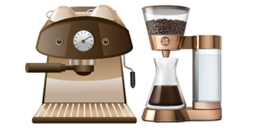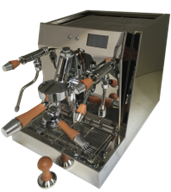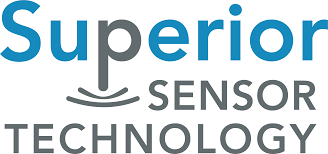Coffee dates back to the ancient kingdoms of Ethiopia, where it is believed that it was first discovered over a thousand years ago.
According to legend, a goatherder named Kaldi noticed his goats became more energetic after eating the beans from a certain tree. He tried the beans and found they gave him a similar boost of energy. Word of this new beverage spread, and soon coffee was being enjoyed all over Ethiopia.
From Ethiopia, coffee spread to other parts of the world, including the Arabian Peninsula, where it became a staple beverage and an important part of their culture. In the 16th century, coffee made its way to Europe, where it quickly became popular. The first coffeehouses were established in various cities in Europe, and coffee soon became a symbol of cultural and intellectual life.
As European countries established colonies and trading posts around the world, coffee plants were brought to new lands and coffee cultivation became a major industry. Today, coffee is grown in over 50 countries, and it is the second most traded commodity in the world, after petroleum. With billions of cups consumed each day, coffee is one of the most widely consumed beverages in the world and continues to be a part of the daily routine of millions of people.
The quest for a better cup of coffee
The quest for a better cup of coffee has been a continuous journey for centuries. The history of coffee is rich with stories of innovation, experimentation, and discovery as people work to perfect the brewing and roasting of coffee beans.
Beginning from its origin in Ethiopia, people have been experimenting with different methods of brewing and roasting coffee beans to bring out their best flavors. The invention of the coffee grinder made it possible to grind coffee beans just before brewing, which allowed for greater control over the quality and consistency of the coffee. With the advent of new technologies, such as espresso machines and French presses, coffee lovers were able to explore new and complex flavor profiles.
Recently, the specialty coffee movement has put an increased emphasis on sourcing high-quality coffee beans and using methods such as pour-over to bring out the unique flavors and aromas of each coffee. The growth of the specialty coffee industry has created a culture of coffee connoisseurs who are always seeking new and innovative ways to improve the taste and quality of their coffee.
With the rise of high-end coffee shops and the increasing popularity of coffee as a gourmet beverage, the quest for a better cup of coffee continues. From the fields where coffee is grown to the kitchens and cafes where it is prepared and enjoyed, the journey towards a perfect cup of coffee is a never-ending quest for excellence.
Improving the coffee experience with sensor technology
Across the world, many people begin their day with a cup of coffee, either with breakfast or as a standalone drink, offering an energy boost that allows people to tackle the day ahead.

Image Credit: Superior Sensor Technology
The aroma is often the first thing people appreciate with coffee, as a nice, freshly brewed cup activates the olfactory senses. Whether drinking it black or with cream and sugar, the taste is essential to the experience most people crave and savor in the morning and possibly throughout the entire day.
As with any consumer staple, the more you can improve the taste and aroma of the coffee, the more it will be desired. Whether using a simple coffee pod system (e.g., Keurig), conventional coffee machine (e.g., Mr. Coffee), or sophisticated brewing system that grinds the beans (e.g., Jura), two fundamental aspects of brewing the perfect cup of coffee are temperature and pressure.
Temperature sensors can help maintain optimal heat conditions when brewing, while pressure sensors ensure that the finest brewing process is followed. Moreover, pressure sensors can ensure the right amount of pressure is applied during the coffee machine cleaning process to remove unwanted, spent coffee residue.

Figure 1. An Espresso Machine. Image Credit: Superior Sensor Technology
How Pressure Sensors Can Help Make Better Coffee
Absolute pressure sensors can be installed and facilitate the brewing of a better cup of coffee by measuring the pressure at selected points in the process. This enables parameters to be finetuned throughout the brewing process. For instance, in an espresso machine, sensors can measure the pressure of the water passing through the coffee grounds, which is crucial for achieving the correct flow to extract the coffee flavors.
By closely monitoring this pressure, the machine can regulate the grind of the coffee beans, the amount of coffee used, and the temperature and flow rate of the water to extract the best qualities of the coffee beans and improve the aroma and flavor.
Pressure sensors are also effective in other coffee making devices, such as a French press and pour-over. In these scenarios, sensors can monitor the pressure of the water as it flows through the coffee grounds, and the appliance can control the amount of water, temperature, and flow rate to optimize the extraction of flavors.
During the automated cleaning process, pressure sensors can be helpful as the sensor can ensure the correct amount of air, steam, and water pressure is being applied throughout the cleaning cycle to disinfect and remove any residue or remaining particles.
Superior Sensor Technology’s Absolute Pressure Sensors
Perfect for elevating the coffee experience, Superior Sensor’s ND Series of absolute pressure sensors measure pressure from as low as 15 psia (pounds per square inch, absolute) up to 150 psia.
With an increased operating temperature range combined with the industry’s lowest noise floor, the ND Series sets the tone with its market-leading accuracy inside 0.1% of the pressure range.
The ND Series offers innovation at the level of integration as it brings together a piezoresistive sensing element with integrated amplification, ADC, DSP, and interface that streamline design and integration efforts.
With such sophisticated capabilities, the ND Series is a complete pressure-sensing sub-system. This exceptionally well-integrated solution increases system reliability through simplified product development and device manufacturing.

This information has been sourced, reviewed and adapted from materials provided by Superior Sensor Technology.
For more information on this source, please visit Superior Sensor Technology.